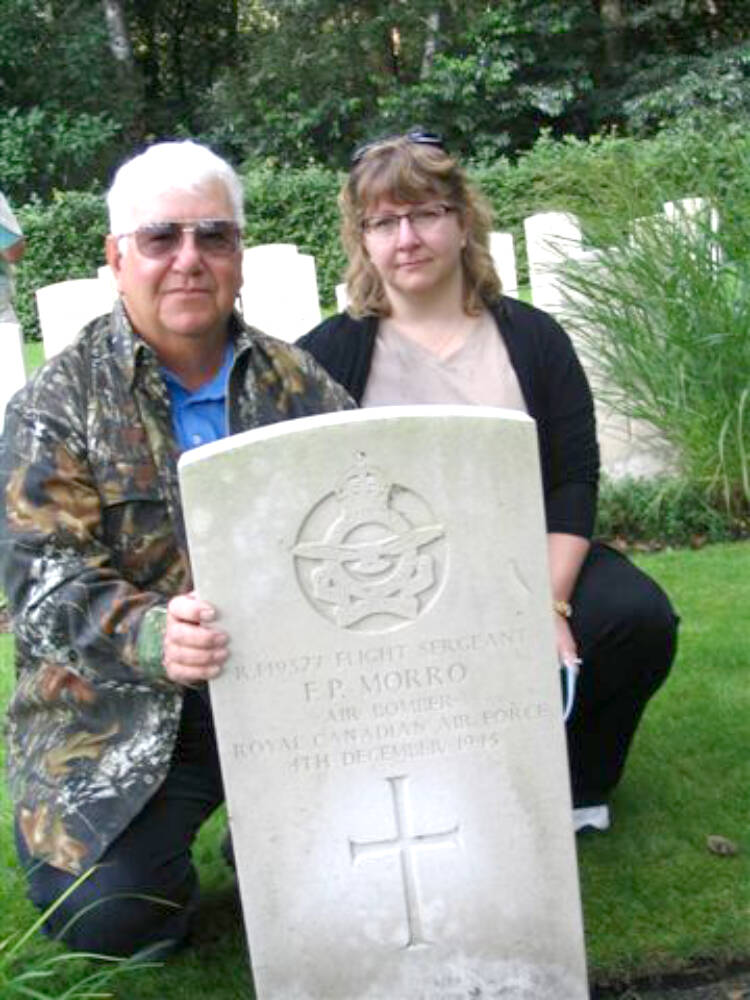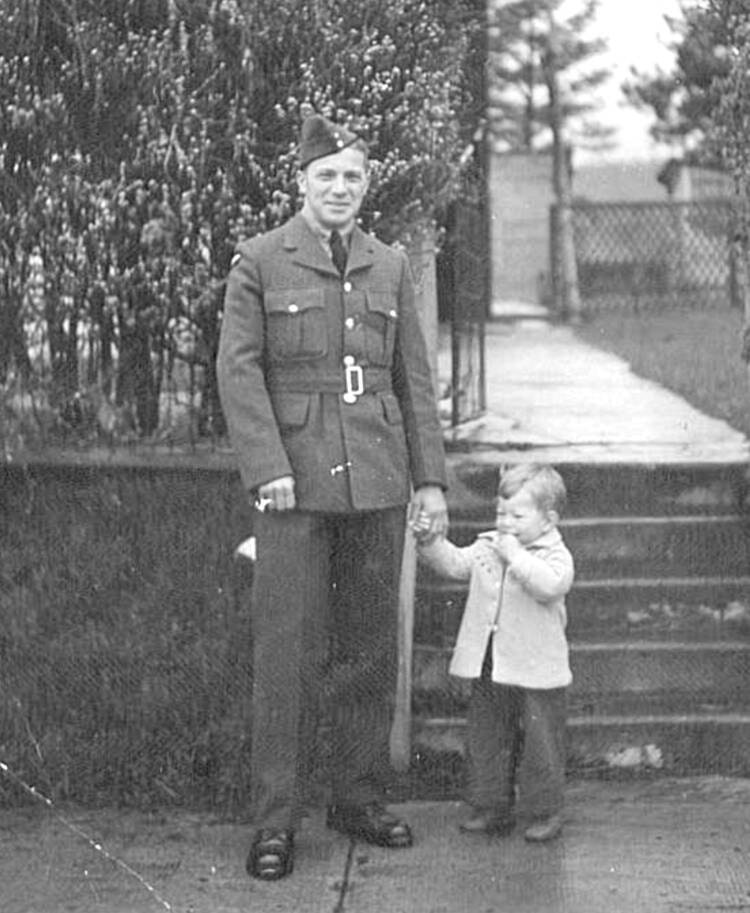On the night of Dec. 4, 1943, seven RCAF crewmen took off in a Handley Page Halifax II bomber, part of of 429 Squadron, heading out on a bombing raid over Germany, with Leipzig as the target.
The seven of them had been together for all 14 missions, crew members from all over Canada. Among them was Frank Morro, of Cranbrook. Frank Morro was the oldest member of the crew, at 27. The next oldest was 21. Together they represented the country — Morro from B.C., the pilot from Manitoba, the Flying Officer from Quebec, the navigator from Ontario …
The crew had 97 hours of flight time. Bombing reports showed flights of 8,000 to 19,000 feet, and described seeing destruction and flames from 100 miles away on their way back.
On that 14th mission, on Dec. 4, 1943, at 2:45 a.m., their plane was attacked by a German night fighter over Kleinenkneten, Germany. The Halifax was hit by fire in its bomb compartment — in the port incendiary load — and exploded into flames.
Three crew members were able to bail out, at 15,000 feet, and parachuted to the ground, landing in a hay field. There, they hid out, until surrendering to German police the next day, who turned them over to the Luftwaffe. They spent the rest of the war in a prisoner-of-war camp.
As to the other four members of the Halifax, they went down with the plane. They were reported as Missing In Action, presumed dead. Among them was Frank Morro.
Frank Morro was born in 1916 in Cranbrook, where he grew up. He worked as a partsman at Hanson’s garage, but is especially remembered as a member of the Cranbrook Rovers.
The 3rd Cranbrook Rovers were a troop formed of young men in their late teens and early 20s, a Senior Scout Group dedicating to camping and exploring the backcountry. They helped lead troops of younger Scouts, kept detailed journals and records of their adventures, and built a beautiful log cabin — the Rovers’ Shack — in the forest near Cranbrook that would become their headquarters.
With the advent of the Second World War, a number of the Rovers signed up. Morro joined the RCAF in 1942, went overseas and was part of Bomber Command as a bomb aimer, right up until the fateful mission on the night of December 4.
The news that Morro was reported Missing In Action made its way back to Cranbrook, devastating Morro’s good friends and fellow Rovers, Ted Smith and Tack Wood. Shortly after hearing that news, Wood received a letter from Morro, which had taken longer to get to Canada than the telegram announcing Morro’s status. Wood couldn’t bear to open the letter, and it remains unopened to this day.
In later years, Morro’s nephew Frank Magro made it his mission to find out his uncle’s story, and find the final location of his grave. He hired a private investigator, who eventually got the details of the last flight of the Halifax, and located Morro’s grave. Morro and his fellow crew members had initially been buried near where the plane crashed in Germany. But it later years, their bodies were exhumed, and reburied in the Sage War Cemetery, near Bremen, where there are almost 948 Commonwealth burials from the Second World War.
In recent years, Frank Magro was finally able to visit Europe and the grave of his uncle and namesake.
In all, four of the Cranbrook Rovers never came home from the War: Frank Morro, James Haley, Stewart Flett, Leonard Dingley. Their deaths meant the end of the Rovers, who disbanded.
Long after the war ended, the B.C. Forest Service discovered the abandoned Rover Cabin in the woods, and burned it down.
In the Cranbrook area, four mountains are named after the four Rovers: Mount Morro, Mount Haley, Flett Peak, and Mount Dingley.

